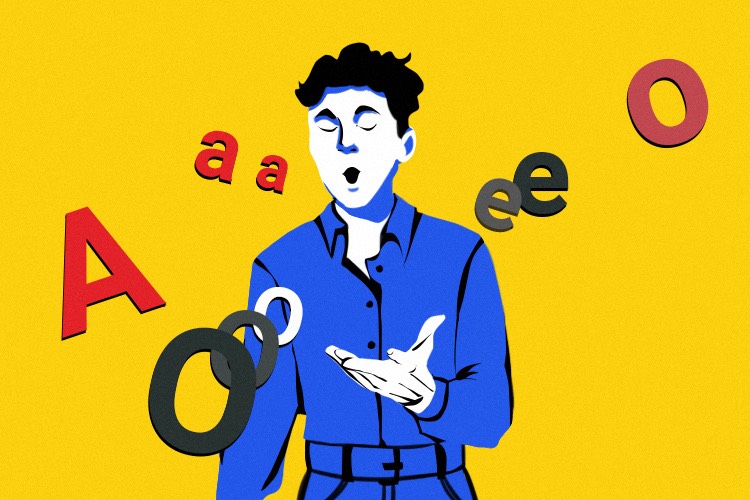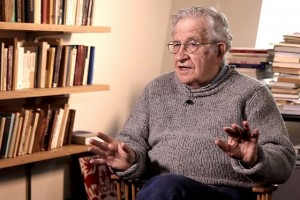Language of Politics
Linguist Noam Chomsky on two meanings of political terms, primary principle of international relations, and ro...

Even if two linguists agree on how to define a case, they might give rather different answers as to a number of cases for particular languages, sometimes giving rise to long-living controversies. One reason is that it is not always clear how to distinguish between two cases and two variants of the same case (of course, certain case forms can be just considered as allomorphs defined by phonological or morphological context, such as /s/, /iz/, /z/ all corresponding to the plural suffix in English nouns). In other cases, however, it is less clear if variation can be reduced to allomorphy. For example, in languages like Finnish, there is a case on an object, which for some nouns is identical to the Genitive (depending on definiteness, specificity) but functioning as the Accusative. Or in Russian, the animate objects have a form identical to the Genitive, whereas only on another subset of nouns will there be a specifically dedicated Accusative marker. Since this variation can hardly be reduced to allomorphy, some authors argue for a distinction between syntactic and morphological cases (Andrew Spencer, a prominent British morphologist with whom I edited the Oxford Handbook of Case, calls them s-case and m-case, respectively). In this analysis, a syntactic accusative would be instantiated by the genitive morphology in Finnish and Russian.

A similar but not-identical distinction is drawn in generative linguistics between morphological and abstract cases. This distinction can also be illustrated in English. Historically, Old English distinguished between cases, but later case distinctions have been lost, except for pronouns. Does this let us conclude that English has cases? The answer depends on a theoretical stance. Most linguists would not subscribe to this conclusion, given that pronouns clearly constitute a minority pattern. However, for a generative linguist, English would count as having cases (admittedly ‚abstract cases ‘, which do not have an overt realization of nouns). One argument for this conclusion is locality conditions on a case assignment. For example, we can say I saw him yesterday, but not *I saw yesterday him. In generative grammar, this would be explained by locality restriction on case assignment; the verb assigns an Accusative case to its complement (its sister node in the tree representation). The generative syntacticians, however, make the point that nouns behave in exactly the same way; compare I saw John yesterday with the ungrammatical *I saw yesterday John. Thus, the claim in generative literature is that both pronouns and nouns have a case, as manifested in the same locality restrictions, even if on nouns, it is not overtly expressed.
While this argument might be seen as theory internal, what is typologically confirmed is that the distinction between case affixes and case particles and adpositions is fuzzy. For this reason, even the concept of a word has been questioned by some typologists. Martin Haspelmath prefers to speak about ‘flagging’ as dependency marking by case and adpositions. Indeed these morphological case and adpositions (case particles) are functionally equivalent and diachronically connected.
Case is often viewed as one of the ways of expressing grammatical relations in addition to word order and agreement, yet the relationship between these three linguistic phenomena is more complex. In part, these phenomena overlap in function, but they also have their own primary domains of application. Thus the universal function of word order is an expression of information structure, although in some cases, it can also be used for disambiguation of subjects and objects, thus competing with the case. In particular, a correlation between SVO (Subject-Verb-Object) word order and the absence of (structural) case has been confirmed in typological literature. Thus, if there is a case system, then we would expect a flexible order, while the opposite might not be true. Having flexible order does not necessarily lead to a rich case system; this language might make use of adpositions or particles to introduce arguments.

Some other correlations have also been suggested, for instance, between case and agreement (the Nominative case and subject agreement; the Accusative and object agreement). The relation between case and agreement was recognized in both language typology (in the view of the case as dependent-marking and agreement as head-marking of grammatical relations, in terms of Johanna Nichols) and also in (formal) theory (in some versions of generative grammar, case assignment is universally related to the agreement, whether expressed morphologically or not). Still, this relation is strained since typological studies (by Anna Siewierska and others) have shown that there is neither complementarity nor strict matching between these mechanisms. This is currently acknowledged in language typology but also in generative literature (at least by typologically-minded generative linguists like Mark Baker). This is actually expected as the central function of agreement is quite different (that of indexing a prominent/topical constituent), and only languages with several agreement series (for a subject, but also objects, possibly also indirect objects) provide evidence for agreement as an alternative mechanism to case.
One of the central concepts in language typology is that of a hierarchy. Hierarchy might be seen as a multivalued dependency pattern in a certain domain. Many such dependencies (including hierarchical) have been discovered by Joseph Greenberg, one of the founding fathers of linguistic typology. In the present context, it is relevant that Greenberg proposed that cases can be ranked on the following markedness hierarchy:
Nominative > Accusative > Dative
The markedness relation can be conceived in different ways. One pertains to formal marking; Dative is more likely to be overtly marked than Accusative, and Accusative is more likely to be overtly marked than Nominative (which in many languages does not have an overt marker). Furthermore, this hierarchy aims at capturing implicational relation; thus, the presence of the Accusative case entails the presence of the Nominative case in a language system. This latter aspect has been taken further by Barry Blake, the author of the classic textbook on Case published by Cambridge University Press. Blake proposed a more elaborate version of the hierarchy as presented below:
Nominative > Ergative, Accusative > Genitive > Dative > Locative > Instrumental, Ablative > Others
The Case Hierarchy constitutes a hypothesis about the possible built-up of case systems typologically. Blake provided some evidence for the hierarchy by looking at the composition of case systems across languages. Thus, two-case languages (as in Iranian languages) typically have cases covering the core functions (Nominative, also called ‘direct’ vs. Accusative, also called ‘oblique’), with other functions being expressed by adpositions. Other languages feature a three-case system (Nominative-Accusative-Genitive/Oblique in, e.g., Semitic), four cases (Nominative-Accusative-Genitive-Dative/Oblique, as in German or Icelandic), five cases (Nominative-Accusative-Genitive-Dative-Ablative/Oblique, as in Latin), six cases (Nominative-Accusative-Genitive-Dative-Locative-Instrumental as in many Slavic languages, or Nomintive-Accusative-Genitive-Dative-Locative-Ablative, as in Turkish).
This hierarchy is, of course, of great interest for typology, as it is an example of the possible constraints on the grammatical systems (here, case systems). A full-scale typological validation of the hierarchy is still outstanding, but certain findings in the literature have been corroborated by typological and corpus studies (in particular, in the writings of John Hawkins). Furthermore, the relevance of Case Hierarchy has been partly corroborated through psycholinguistic research. For example, cross-linguistic studies of language acquisition confirmed that cases higher on the hierarchy are acquired earlier cross-linguistically. Furthermore, psycholinguistic research also revealed that language comprehension violations resulting from a substitution of the higher case for the lower one (in ungrammatical sentences, when accusative replaces dative) are felt as less severe as compared to violations of the opposite kind.
Blake’s conception of the hierarchy is actually still more ambitious, as he suggests that cases adjacent to the hierarchy are more likely to syncretize (be expressed by a single marker). This interpretation is, however, more contentious since a simple hierarchy like this cannot really capture all the semantic relations between cases and all the possibilities of syncretism or broader polysemy patterns. Explaining cross-linguistically frequent polysemy patterns (such as allative-dative polysemy) needs a more complex network, such as semantic maps. Semantic maps are typological constructs aiming at capturing regular polysemy patterns across languages and also diachronic developments. These multidimensional representations can explain more realistically how cases can develop, extend their meanings and merge. The figure below shows a semantic map for syntactic case functions, with marker polysemies illustrated for Eskimo (oval shapes in the Figure below represent marker polysemies in Eskimo, which extend over several adjacent functions on the map).

A nice thing about semantic maps is that the posited configuration of functions is assumed to be universal, only extensions of certain markers across the functions on the map would be different for different languages.

After working on case in a project led by Helen de Hoop at the University of Nijmegen (Holland), I was involved in typological projects at Max Planck Institute for Evolutionary Anthropology in Leipzig. In particular, I worked with Bernard Comrie and Martin Haspelmath on the typology of valency classes, which resulted in the publication of the Handbook of valency classes and an online database, ‘Valency Patterns Leipzig’ (ValPaL). The Leipzig Valency Project was more focused on verb types but also related to case insofar as verbal valency is determined by ‘valency patterns’ (case frames used for subject and objects for certain verbs). We started with a selection of 80 verb meanings and studied their case frames across languages to see whether certain verbs are more likely to share the case frame in the same way as some other verbs. We tested these predictions for a sample of the world’s languages in ValPaL, which revealed certain clustering of verbs (for example, different preferences for transitive use), but also, more relevantly, in the present context, clustering of the argument of individual verbs with respect to case marking. The Figure below is a visual representation (through the use of a multidimensional scaling technique) of the clustering of certain roles (arguments of individual verbs) with each other in ValPaL.

Currently, I am involved (together with Walter Bisang and other colleagues at the University of Mainz) in another ambitious typological project, which deals with grammaticalization. In particular, we try to make a grammaticalization theory (as developed by Christian Lehmann, Bernd Heine, Joan Bybee, and their followers) more predictive, trying to assess frequencies/probabilities of various grammaticalization paths (e.g., “future’’ meaning can develop from verbs of moving like “I am going to V”). The question is how the input structures in particular languages influence the outcome of grammaticalization processes. Another big challenge is to find out how all these grammaticalization parameters (semantic reduction, phonetic reduction, bondedness) develop and relate to each other. The work by Joan Bybee showed there is some co-evolution so that phonetic reduction (e.g., from going to to gonna) happens only when the verb of motion changes its meaning to intention/future marker (semantic reduction). To give another example, from the domain of case-marking: the Balto-Finnic noun *kansa ‘comrade’ lost its lexical meaning when it was grammaticalized to a comitative-instrumental case marker -ga/-ka ‘with’ in Estonian. On the other hand, this covariation is clearly subject to areal variation, as shown most clearly by Walter Bisang for languages of South East Asia, where semantic shifts are not accompanied by semantic reduction to the same extent. Neither does it result in the bondedness of grammaticalizing items; after all, Mandarin Chinese has not developed into an inflectional language. We ultimately plan to produce a handbook of grammaticalization scenarios and an accompanying pilot database; both enterprises aim to contribute to turning grammaticalization theory from a general framework into a predictive theory in the sense of natural sciences. This is of course, a larger enterprise, which needs concerted effort from different sections of the linguistic community including typologists, historical linguists and computational linguists, and our project is just a first step in this direction.
As stated above, our current project is about grammaticalization in general rather than about the grammaticalization of cases, although in my earlier writings, the two topics have been brought together. In particular, I suggested that grammaticalization targets function as kinds of attractors in dynamic systems. Indeed certain phenomena, which look exotic, might be best viewed as incomplete grammaticalization cycles. Consider the famous case of Kayardild, an Australian language. This language is well-known in linguistic typology for its remarkable case marking due to the writings of Nick Evans, a prominent Australian linguist (who is also a contributor to Serious Science). One of the remarkable phenomena in this language is “verbal case”, which is a case-marker, which attaches to a noun to mark it for its role, but in addition, is able to take verbal inflection. Consider an imperative sentence (adopted from Evans’ grammar) like wuu-ja wirrin-da ngijin-maru-th [give-Impertaive money-Nominative I-VerbalDative-Imperative] ‘Give me the money!’. In this example, the form ngijin-maru-th [me-VerbalDative-Imperative] ‘(give) me’ contains a verbal dative (marking the recipient, as is expected from a dative marker), but strikingly this case marker is combined with imperative inflection. This pattern looks truly exotic until one realizes that these constructions originate in noun-verb compounds (so the verbal dative stems from maru.tha ‘put’). This accounts for why the verbal marker can be followed by verbal inflection in accordance with its origin; what is unusual is rather that the full cycle of reanalysis of verbal forms into cases has not been completed, that is, did not result in the loss of inflection when the verb was reanalyzed as a case marker.
There are many open questions requiring further research in the domain of case as well. As I mentioned above, a full-scale typological assessment of Case Hierarchy would be a rewarding enterprise. The study of the evolution of case systems is a fascinating and challenging task, also because case systems are one of the most complex grammatical categories, and such typological study would teach us some lessons about mechanisms and paths of development of linguistic systems in general.
Edited by Ekaterina Vylomova

Linguist Noam Chomsky on two meanings of political terms, primary principle of international relations, and ro...

Neuroscientist Sophie Scott on humans’ ability to distinguish sounds, bilingualism, and the Japanese language

Joint analysis of data on genomics, linguistics and geography leads to new insights into their interference